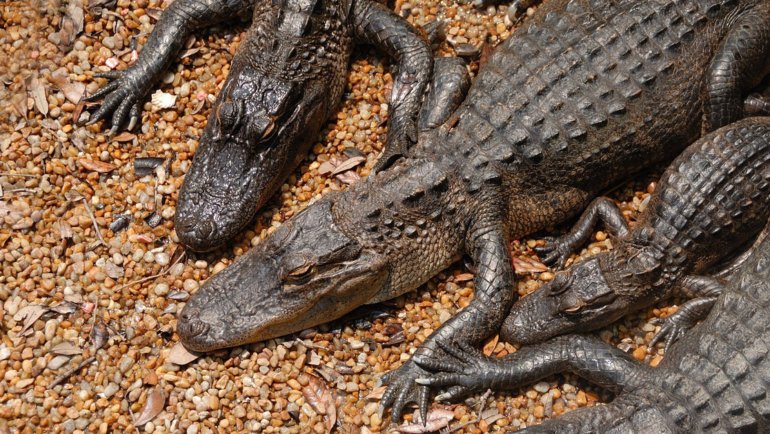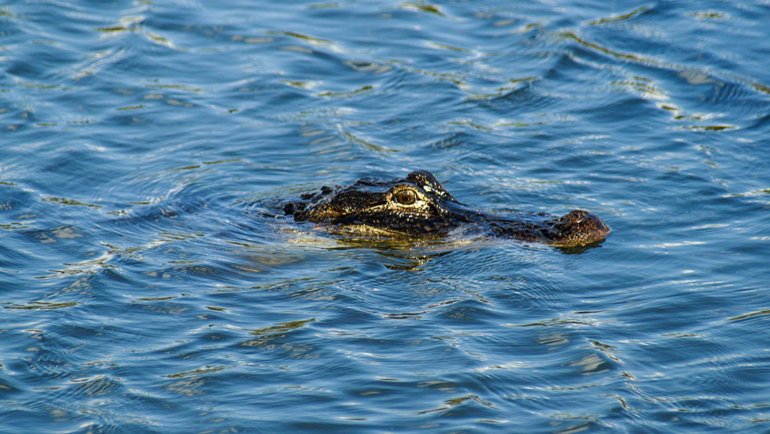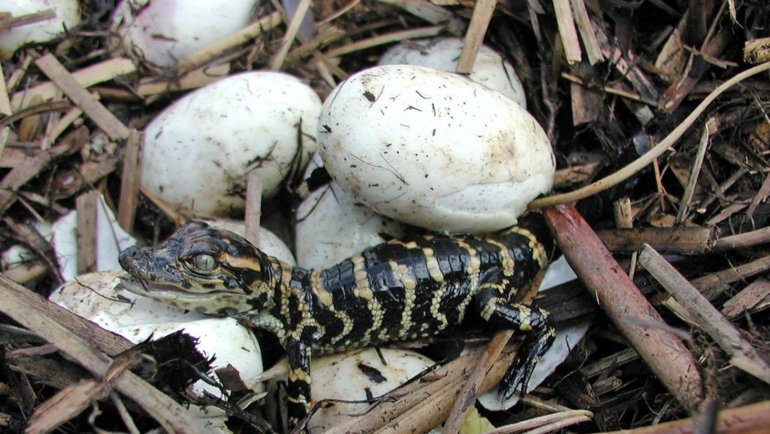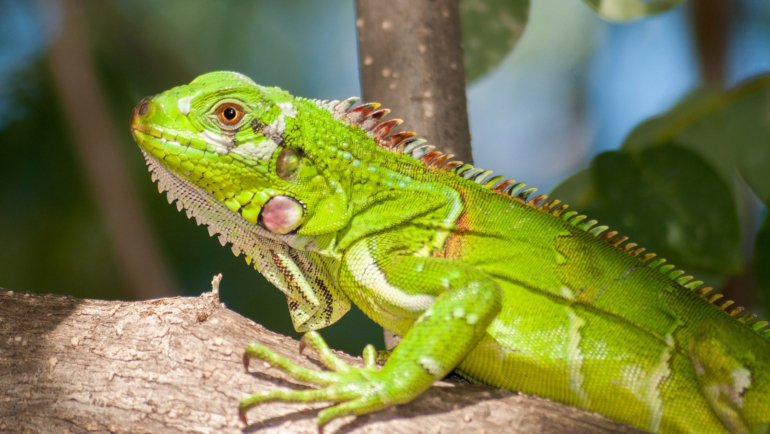In the freshwater habitats of the southeastern United States resides a creature seemingly pulled straight from prehistoric times.
The alligator snapping turtle, with its dinosaur-like appearance and unique hunting method, fascinates both herpetologists and nature enthusiasts.
In this article, we’ll delve into the captivating world of this one-of-a-kind species, uncovering its intriguing behaviors, impressive attributes, and the conservation issues it currently faces.
The Alligator Snapping Turtle at a Glance
Classification
| Kingdom: | Animalia |
| Phylum: | Chordata |
| Class: | Reptilia (Reptiles) |
| Order: | Testudines |
| Family: | Chelydridae |
| Genus: | Macrochelys |
| Species: | M. temminckii |
Essential Information
| Average Size: | 26 inches shell length (66 cm) |
| Average Weight: | 175 pounds (79 kg) |
| Average Lifespan: | 70-100 years |
| Geographical Range: | Southeastern United States |
| Conservation Status: | Vulnerable (IUCN Red List) |
Species and Subspecies
Until recently, it was believed that all alligator snapping turtles belonged to a single species, Macrochelys temminckii.
However, a 2014 study found significant genetic differences and variations in skull shape among populations, leading to the identification of two additional species: Macrochelys suwanniensis, found in the Suwannee River, and Macrochelys apalachicolae, found in the Apalachicola River and other panhandle rivers.
Despite these variations, all three species share many physical characteristics and behaviors.
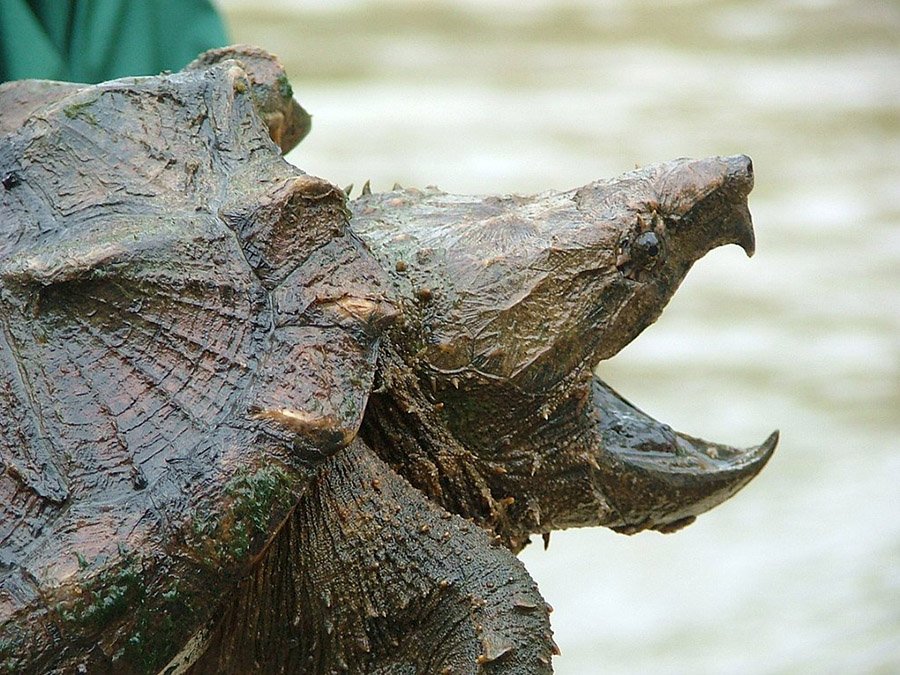
Description
Alligator snapping turtles possess a robust and heavily ossified carapace (shell), which can measure up to 26 inches (66 cm) in length.
They are characterized by their strongly hooked beak, large head, and three prominent dorsal ridges running the length of their shell, giving them an ancient, dinosaur-like appearance. Their color can range from brown to black, often covered with algae that help them camouflage in their natural habitats.
One of the species’ most distinguishing features is a small, worm-like appendage on the turtle’s tongue, used to lure fish into its mouth – an adaptation unique among turtles.
Sexual dimorphism is present but not overly pronounced in alligator snapping turtles. Generally, males are larger than females, and their tails are longer relative to the carapace.
Habitat and Distribution
The alligator snapping turtle inhabits the southeastern regions of the United States. They are primarily found in larger rivers, canals, lakes, and swamps that have slow-moving water and muddy bottoms. They are aquatic creatures and rarely leave the water except for females that travel onto land to lay eggs.
Their range extends from eastern Texas to the Florida panhandle and north to southeastern Kansas, Missouri, southeastern Iowa, western Illinois, southern Indiana, and southwestern Kentucky. Each of the three species has its own distinct range within this broader area, generally associated with specific river systems.
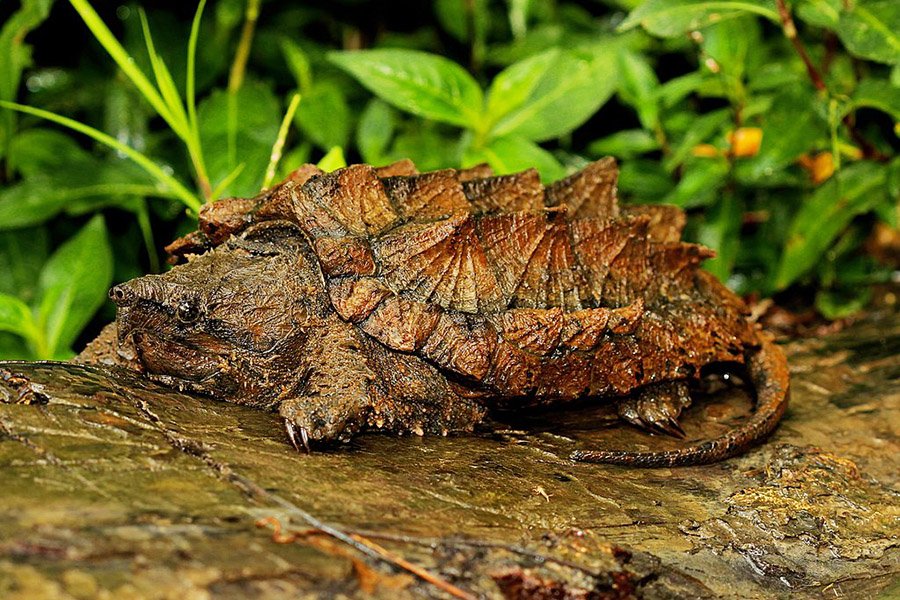
Behavior
Alligator snapping turtles are largely nocturnal creatures. During the day, they typically remain stationary, often buried in sediment with only their eyes and nostrils exposed. At night, they become more active, though their movement patterns are still relatively limited. They can stay underwater for up to 50 minutes before needing to surface for air.
In terms of social structure, alligator snapping turtles are solitary animals. Interactions are limited mainly to aggressive encounters between males or breeding attempts between males and females.
As for communication, research is limited, but it is believed that alligator snapping turtles may use tactile and visual cues. Juvenile turtles have been observed to produce distress calls when threatened.
Diet and Hunting/Feeding Behavior
Alligator snapping turtles are carnivorous, with a diet mainly consisting of fish. However, they are opportunistic feeders and will also eat a variety of other animals such as frogs, snakes, worms, clams, and even small mammals or birds when available.
Their hunting strategy is unique among turtles. They employ a form of aggressive mimicry using a worm-like appendage on their tongue to attract prey.
The turtle lies motionless in the water with its mouth open, wiggling the appendage to lure in fish and other unsuspecting creatures. When the prey is close enough, the turtle snaps its jaws shut with incredible speed, swallowing the prey whole.
Predators
Adult alligator snapping turtles have few natural predators due to their large size and formidable defenses. However, eggs and hatchlings are vulnerable to predation.
Raccoons, large fish, birds, and other animals will readily consume eggs and young turtles. Humans also pose a threat to all stages of the alligator snapping turtle’s life cycle, through habitat destruction, vehicle strikes, and overharvesting for meat.
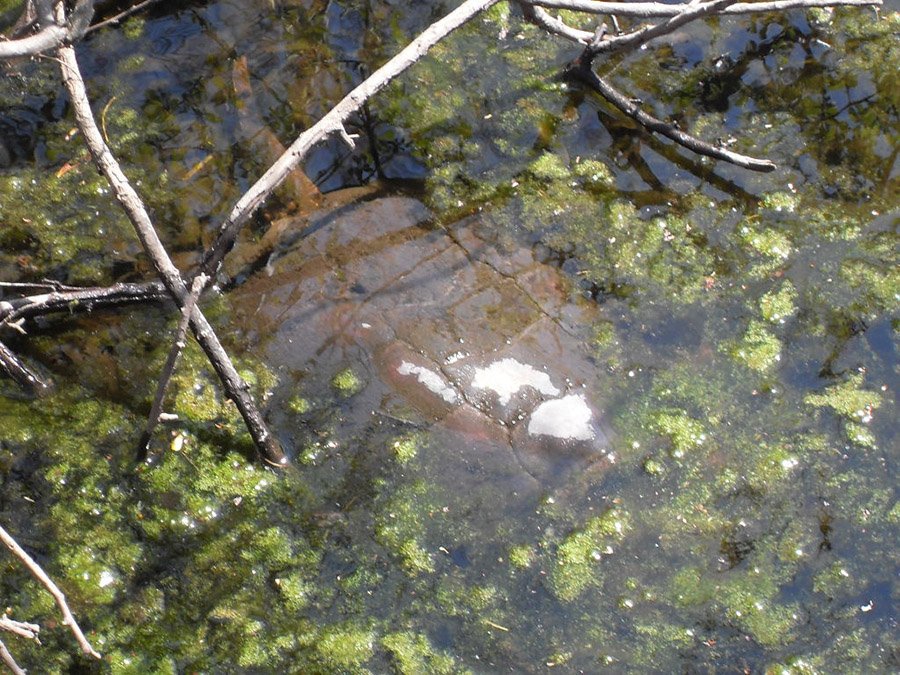
Reproduction and Life Cycle
Alligator snapping turtles become sexually mature at around 11 to 13 years of age. Breeding typically occurs in the spring. The female will lay anywhere from 10 to 50 eggs, with the average being around 25. She lays her eggs in a nest she digs near the water’s edge, usually at night. The eggs incubate for about 100 to 140 days before hatching.
The sex of the hatchlings is determined by the temperature of the nest, with cooler temperatures producing males and warmer temperatures producing females.
After hatching, the young turtles make their way to the nearest body of water. There is no parental care in this species; the hatchlings are on their own from the moment they’re born.
Conservation and Threats
The alligator snapping turtle is currently listed as vulnerable by the IUCN Red List of Threatened Species. The main threats facing this species include habitat loss due to human activity and overharvesting for their meat and the pet trade.
Efforts are underway to conserve the species and improve their population status. These include habitat protection and restoration, regulations on hunting and collection, as well as captive breeding and reintroduction programs.
Educational programs are also essential to raise public awareness about the importance of conserving this unique and fascinating creature.
Fun Facts
- The alligator snapping turtle is one of the heaviest freshwater turtles in the world, with some individuals reaching weights of over 200 pounds (90.7 kilograms).
- These turtles possess a unique method of luring prey – they have a worm-like appendage on their tongue that they wiggle to attract fish into their mouths.
- Despite their fearsome appearance and reputation, alligator snapping turtles are relatively docile in the wild and will generally only bite humans if threatened or handled.
- Unlike many turtles, alligator snapping turtles rarely leave the water except when females come ashore to lay eggs.
- They are known to live a long time, with some individuals recorded living over 100 years in captivity.
Frequently Asked Questions
Are alligator snapping turtles dangerous to humans?
Generally, alligator snapping turtles pose no threat to humans unless they are threatened or handled. Their powerful jaws can deliver a painful bite, so it’s best to leave them alone.
What do alligator snapping turtles eat?
They have a diverse diet and can eat almost anything they can catch. This includes fish, frogs, snakes, small turtles, birds, small mammals, and carrion.
How big can alligator snapping turtles get?
These turtles are among the heaviest freshwater turtles in the world. They can grow up to 26 inches (66 cm) shell length and can weigh over 200 pounds (90.7 kg).
How long do alligator snapping turtles live?
They have been known to live over 100 years in captivity, but the average lifespan in the wild is estimated to be around 70 years.
Where can I see an alligator snapping turtle in the wild?
Alligator snapping turtles are native to the southeastern United States. They can be found in freshwater habitats like rivers, lakes, and swamps. Always observe wildlife from a respectful distance and never disturb or attempt to handle wild turtles.

